Our Time on Earth
The 24-hour clock analogy, which states that if the world were formed at midnight, with the present moment being 24 hours on, then humans have been around since 11:59:59pm, may not be a new one, but its poignancy never really fades. As a species, we indeed are but a blip in the history of the earth and barely even a speck when it comes to the lineage of the universe. Yet, a whole host of brand new analogies about our short time on the planet are proving to be even more evocative. Whether it’s the number of football pitches worth of the rainforest that are being felled daily; the amount of double decker buses it would take to show how much plastic waste we produce; or how many blue whales represent the volume of the ‘plastic soup island’ that bobs about in the middle of the pacific ocean, they’re a damning indictment of the impact we have had and are still having, as a species. The term Anthropocene was coined to describe our time now; a point in the world’s history where human activity has been the dominant influence upon the climate and the environment.
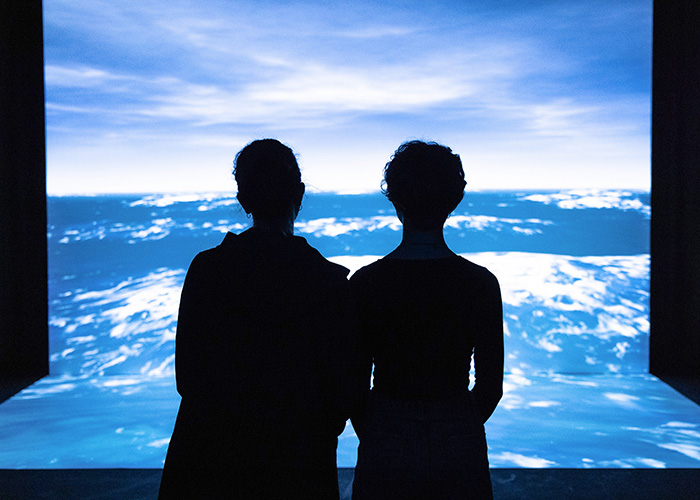
We’ve all heard about the climate crisis; the narrative is unavoidable and pressing, and let’s face it, increasingly depressing. But an ambitious new exhibition at the Barbican Centre seeks to highlight the power of global creativity to transform the conversation around the climate emergency. Our Time On Earth has been created by Barbican International Enterprises who curate alongside guest curators Kate Franklin and Caroline Till, who also conceived the exhibition. They’re keen to point out that in order to shift hearts and minds, it is essential that a cross-disciplinary approach to retelling the climate crisis narrative is taken:
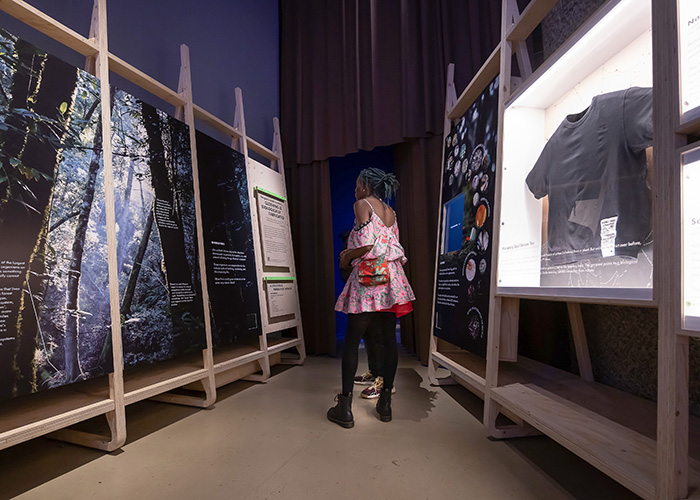
“The science is essential – there’s no doubt about that. But art, design, and culture have the power to move us, and creative propositions of the sort we have gathered within Our Time on Earth aim to seduce the visitor into another way of seeing – another way of being. They invite us to listen, to feel, to really see, what it could be like to live and thrive in an alternative and positive future.”

There is indeed much to see, listen to, and feel when visiting the exhibition. Located in the Curve space, Out Time on Earth presents 18 works from 12 countries, including 12 entirely new commissions, and brings together academics, architects, artists, activists, designers, ecologists, engineers, environmental campaigners, researchers, scientists, technologists and writers. The exhibition is made up of three interconnected sections – Belong, Imagine and Engage, which are designed to create a shift in consciousness, changing the way we think about the natural world, with collaboration a noticeable feature of much of the work on show.
Belong focuses on our place in the biosphere and with it our connection to all living things. Even the use of the term biosphere; which is used to describe all and any parts of the earth where life exists, expands our thinking beyond perceivable life. From the highest mountains to the deepest seas, life exists everywhere. Rainforests are a prime example of an environment where there is far more life going on than meets the eye. We know that they are rich in plants and animals of massively varying kinds but seldom do we think about what’s going on beneath the surface. That is no small part because we ourselves don’t really operate underground, which is where digital art collective Marshmallow Laser Feast’s Sanctuary of the Unseen Forest comes in.
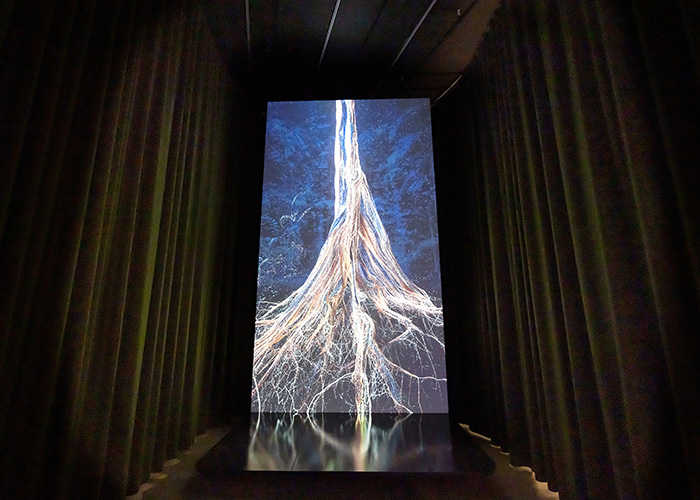
We may be aware that the trees of the rainforest supply us with much of the oxygen we breathe but this massive digital artwork, which stands tall and proud in the darkness, opens up the inner and lower world of a tree – specifically a giant Ceiba pentandra tree from the Colombian Amazon. Using volumetric data, field recordings, and ecological surveys, the team has been able to ascertain many of the unseen workings and connections from within the tree, and the ever-moving video transports us around this secret world. By taking us beyond our human scale, moving us up and down the tree’s interior network of phloem and root system through a rhythmic pulse, we see that there are innumerous connections, not least to the mycelium network within the soil (sometimes referred to as the Wood Wide Web). It’s a unique and inspiring experience and one that not only helps remind us of the automatic but life-giving processes that are continually carried out within our own bodies, but also that ultimately everything in life is connected. To go one step further, the Ceiba may also be a welcome metaphor for considering how we might better design the built environment. Can we take into consideration every layer of the physical structure and its impact upon people and the planet, as well as every human connection involved in its creation and occupancy over the course of its existence?
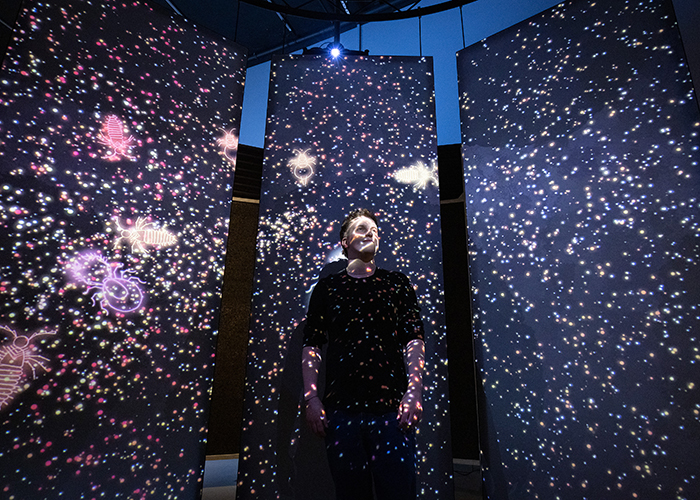
As the title suggests, The World Beneath Our Feet, is a further exploration of the hidden world within soil, something that author, journalist and environmental activist George Monbiot and creative innovation studio Holition believe should be as valued as highly as the Great Barrier Reef. It’s a fitting entry to the Imagine area of the show, which looks to offer a new set of values to help shape positive possibilities for a near-future world. The digital artwork, this time shown on multiple screens that form an in-the-round experience, zooms in on soil to show the abundance of microscopic life within. As Monbiot points out, “Within a few minutes, you might see more of the major branches of life than on a week’s safari in Tanzania.” But this piece isn’t just about the spectacle of abundance, it’s also another eye-opening insight into the intricacies and all important connections that go on under our feet.
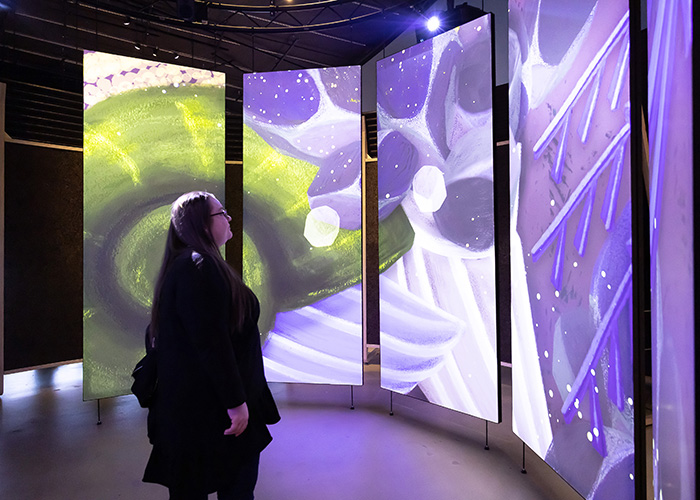
We’re only just beginning to understand the full complexity of the communication that goes on between plant root hairs, mycelium and bacteria within soil, but it’s clear that its a system for which we should be taking far greater consideration, as Monbiot stresses:
“Soil is among the most fascinating and complex of all ecosystems, yet we treat it like dirt. We take it for granted, and erode, crush and contaminate it. This project aims to inspire a new respect for the narrow layer between rock and air, on which our lives depend.”
Elsewhere in the Imagine section, Nairobi-based design-build firm, Build X Studio focus directly on the built environment and asks the pertinent but often difficult question Where Does Your Building Come From? Working closely with construction innovators MycoTile, they seek to prioritise the use of local materials alongside the use of global technology. Material samples on display make it relatively easy to imagine a world where buildings are made from timber, earth and mycelium, and they come with the guarantee of being healthy for us and the planet.
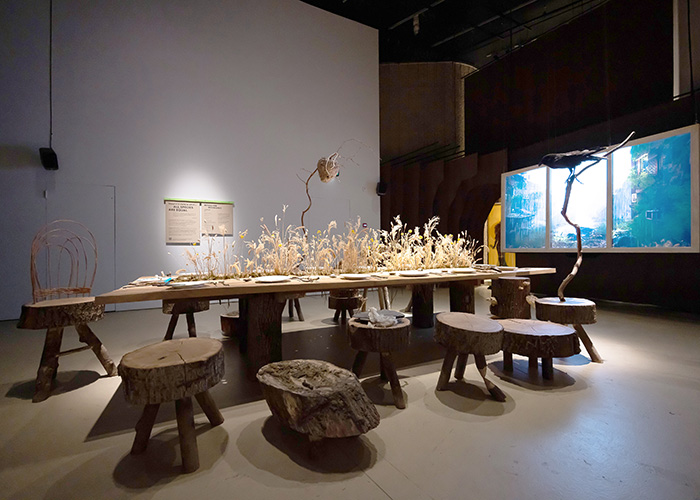
Superflux‘s Refuge for Resurgence pushes the imagination a little further by proposing a new kind of home where humans, animals, birds, plants, moss and fungi prosper together with resilience, adaption, and hope. At first glance, the dining table that dominates the centre of the space could be mistaken for that of the Mad Hatter’s tea party, but on closer inspection it’s clear that this is a different kind of banquet altogether. In fact, the premise for the work involves 14 different species, from crows to bees, all of who, are invited to sit down and eat together in another near-future scenario where the old way has ended and a new dawn of resurrection has begun. Whilst conceptual in approach, the message is direct; it’s time that we rethink our position in the natural world and start to move away human-centred supremacy to mutual ecological respect and embracing a more-than-human future.
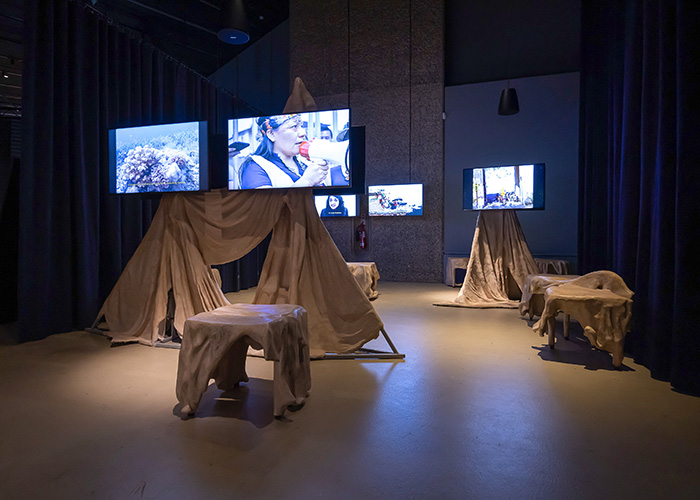
The works in Engage change tact once again, focusing on notions of collectivism and encouraging action for widespread systematic change. Stories of Change is an immersive multiscreen environment by The Earth Issue and presents the stories of 10 people or groups who are fighting for a brighter future. Each is dedicated to creating more inclusive and diverse conversations in global environmental movements, focusing on what is being done at grassroots level. Whilst Sonic Waterfall combines light and sound to create a therapeutic moment at the end of the exhibition. Designed by Silent Studios and inspired by their work with Damon Albarn on his solo album The Nearer The Fountain, it offers a moment of calm, where visitors can reflect upon the show itself whilst creating one final moment of awe for the natural world.
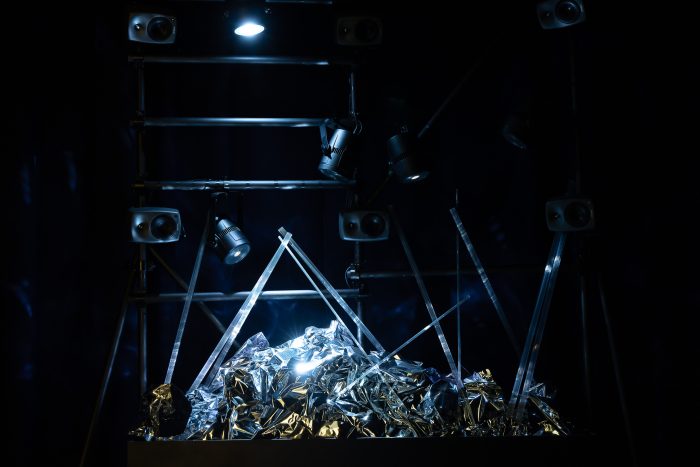
These, and all of the exhibits within the show feel timely and quite importantly, positive in their outlook. There is no one way to approach the climate crisis and certainly no silver bullet to solve all of the problems that we as a species have caused, but with collective imagination and engagement there is hope that all living entities can continue to belong on the planet.
The exhibition runs until 29th August 2022 and more information can be found at www.barbican.org.uk/ourtimeonearth




